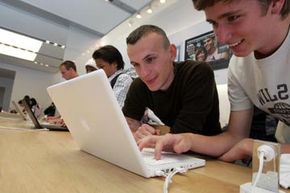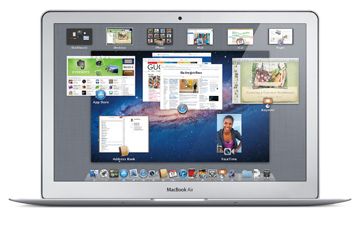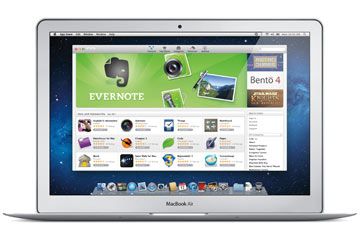In the spring of 2006, Apple unveiled the MacBook, a 13-inch (33-centimeter) laptop that would soon become a phenomenon. It replaced Apple's everyday laptop, the iBook, and the professional model, the PowerBook -- two laptops that had been popular, but not nearly as successful as the MacBook went on to be [source: Gallagher]. In a short time, the shiny, white, plastic MacBooks could be seen dotting the tables of cafés all across the world, staking their claim to counter space alongside lattes and gourmet muffins.
Perhaps it was the simplicity of the machine that made it so popular. With a sleek, elegant design, not overloaded with frills or unnecessary extras, it became the quintessential computer for college freshmen, young professionals and families alike. The standard white body, emblazoned with a glowing Apple logo, was unmistakably familiar, though a few willing to spend an extra $200 sported the even sleeker black-bodied model. Sure, PC owners had their multi-colored computers in different shapes and sizes, and with lots of buttons and customizable options, but MacBook owners didn't care because their machine was powerful, simple and beautiful. Plus, it was a Mac, which meant it faced few of the problems that plagued PCs, like crashing or viruses [source: Stein]
Advertisement
With all of the power and reliability of a Mac, the portability and professional look of similar PC laptops and a simplicity and ease of use that made Mac lovers of many former PC owners, the MacBook fit many people's idea of the perfect computer.
But then, suddenly, it was gone.
The last model update for the traditional MacBook came in mid-2010, and by July of 2011 the model had been discontinued in favor of the wafer-thin MacBook Air and the ultra-powerful MacBook Pro models. Apple didn't make a big deal out of the transition -- they simply stopped selling it. But even though you can't buy a new MacBook these days, refurbished models are still available and many people continue to own the trendy computer that took the laptop market by storm in the first decade of the millennium.
So what made the best-selling Mac in history so great? Keep reading to find out.
Advertisement



